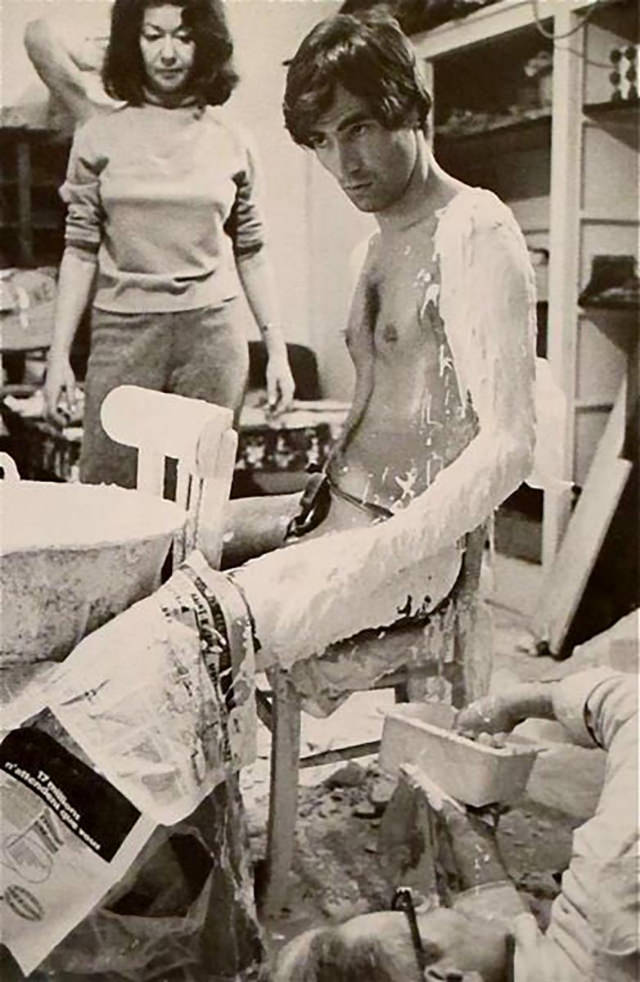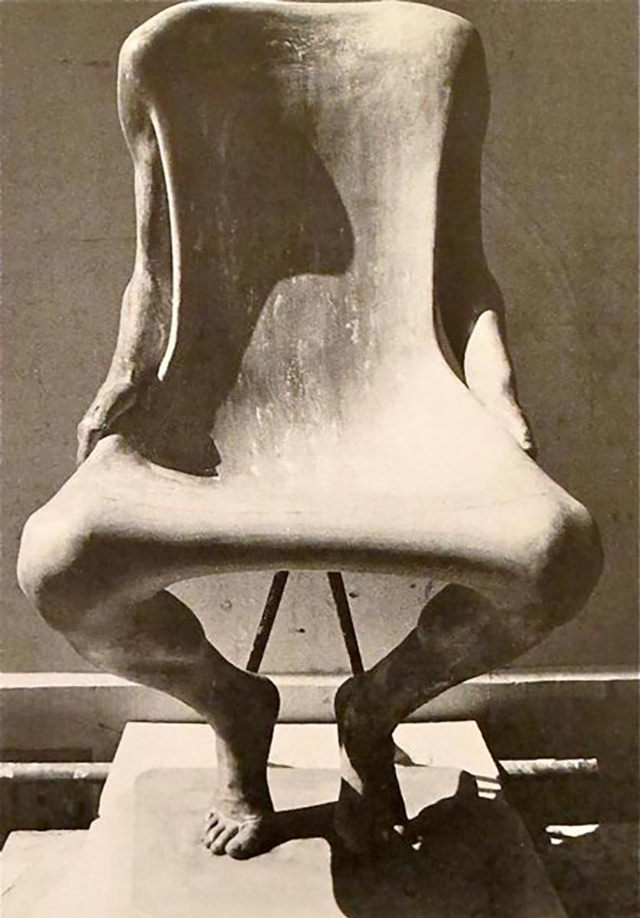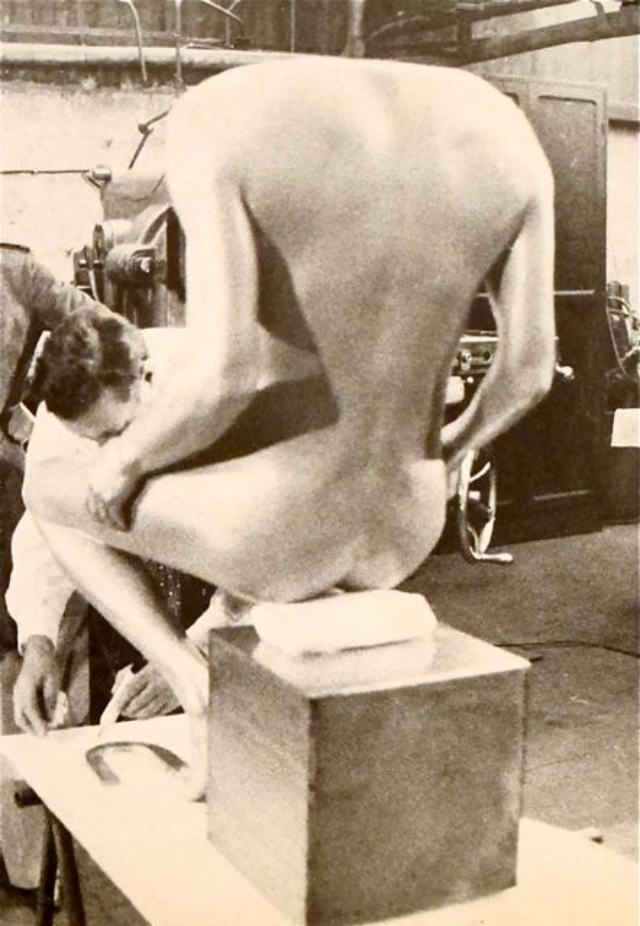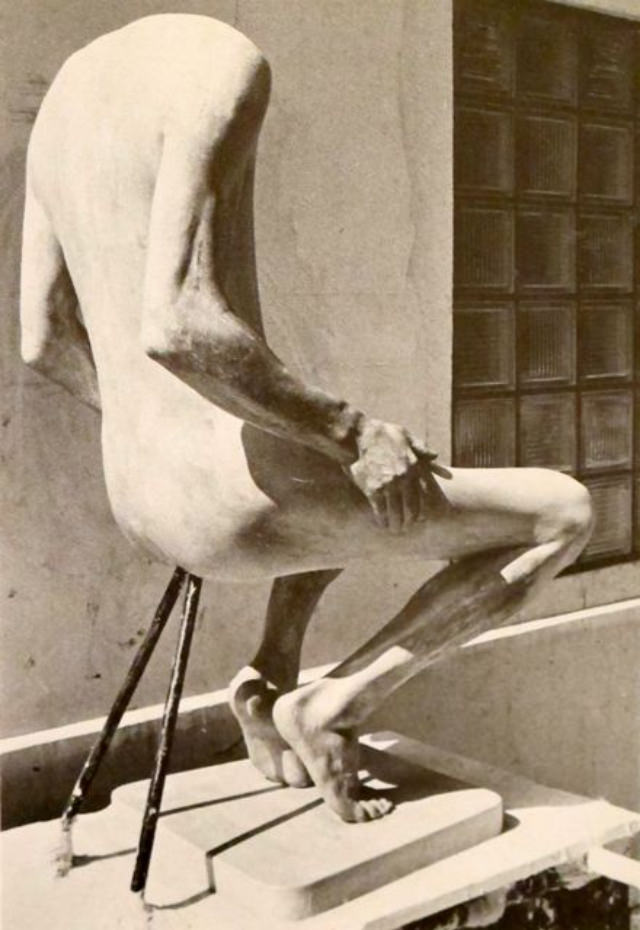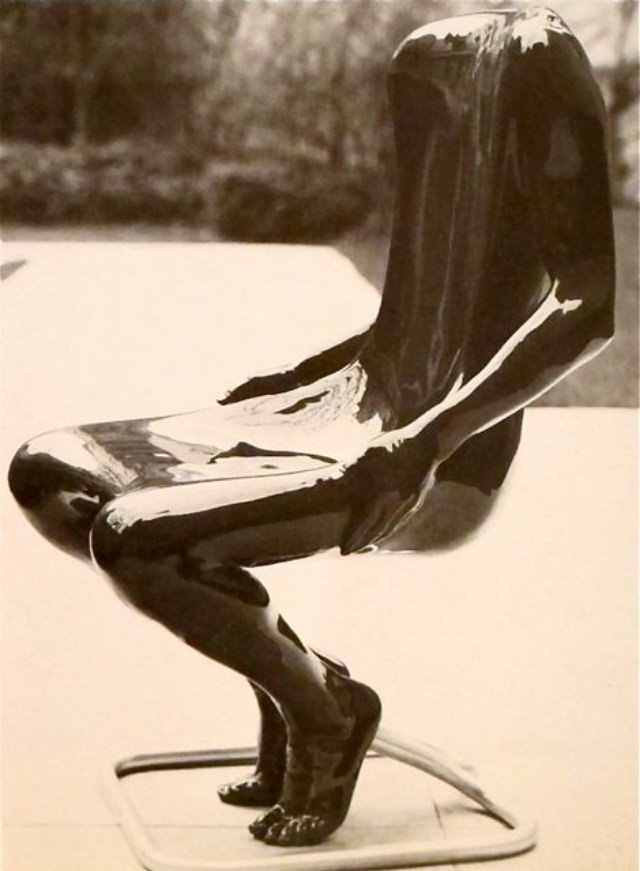The story behind the Homme Chair is a fascinating one. Francken, known for her work in sculpture and furniture design, took a fine-looking young man and covered him in plaster to create a mold of his backside. This mold was then used to create the Homme Chair, which takes its name from the French word for “man.”
The process of creating the chair was supervised by Francken herself, ensuring that each was a work of art in its own right. The chair’s base is made of stainless-steel tubing, while the plaster mold is made directly on the model. The resulting chairs were produced in limited editions in various plastic material colors, sponsored by Scte—Eric and Xiane Germain of Paris. One of the most exciting aspects of Ruth Francken’s life and work is the breadth of her experiences and influences. Born in Prague in 1926, she lived in several different countries throughout her life, including the United States, England, Italy, France, Germany, and Canada. This global perspective is evident in her art, which draws on various cultural traditions and aesthetics.
In addition to her work in sculpture and furniture design, Francken also had a successful career as a painter. Her early paintings were characterized by a loose, gestural style that Abstract Expressionism influenced. However, as her career progressed, her work focused on object sculptures, collages, and textiles. Her art took on a more surrealistic and pop-art aesthetic, and she became known for exploring communication and connection between people.
Over the years, the Homme Chair has become a highly sought-after piece of design history. In 1983, Francken reissued the chair in a numbered edition with Felix Canetti and the Galerie X Plus. After Canetti’s death, Francken continued production independently and numbered the copies sequentially.
But the Homme Chair is just one example of Francken’s incredible talent as a sculptor, painter, and furniture designer. Born in Prague in 1926, Francken’s life and career spanned over six decades, two continents, and more than half a dozen countries. She was considered an Abstract Expressionist in her early career, but her work took on a more surrealist and pop-art aesthetic over time.


